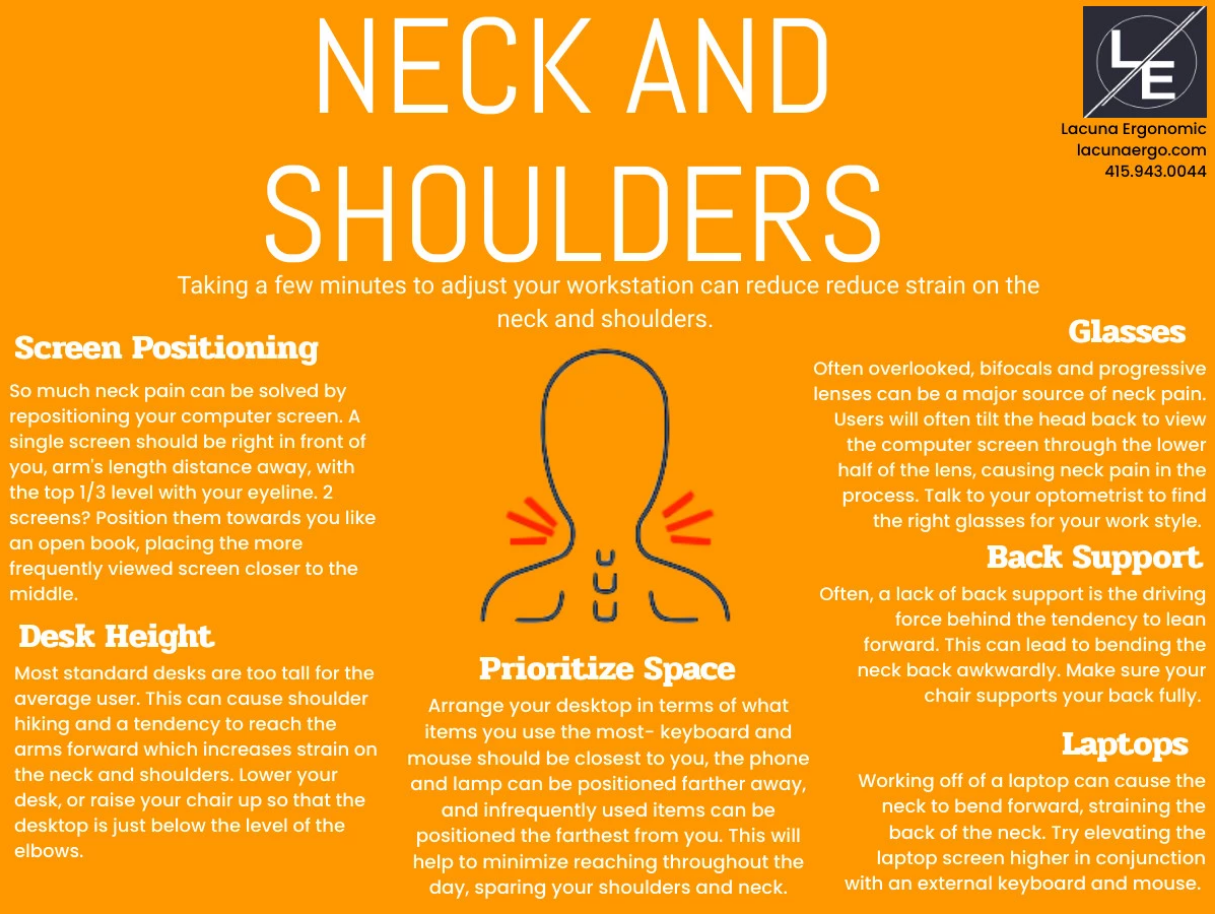Ergonomics Education - Neck and Shoulders
Taking a few minutes to adjust your workstation can make it more ergonomic, resulting in reduced strain on the neck and shoulders.

- Screen Positioning: So much neck pain can be solved by repositioning your computer screen. A single screen should be right in front of you, arm's length distance away, with the top 1/4 level with your eye line. 2 screens? Position them towards you like an open book, placing the dominant screen closer to the middle.
- Desk Height: Most standard desks are too tall for the average user. This can cause shoulder hiking and a tendency to reach the arms forward which increases strain on the neck and shoulders. Lower your desk, or raise your chair up so that the desktop is just below the level of the elbows.
- Prioritize Space: Arrange your desktop in terms of what items you use the most- keyboard and mouse should be closest to you, the phone and lamp can be positioned farther away, and infrequently used items can be positioned the farthest from you. This will help to minimize reaching throughout the day, sparing your shoulders and neck.
- Glasses: Often overlooked, bifocals and progressive lenses can be a major source of neck pain. Users will often tilt the head back to view the computer screen through the lower half of the lens, causing neck pain in the process. Talk to your optometrist to find the right glasses for your work style.
- Back Support: Often, a lack of back support is the driving force behind the tendency to lean forward. This can lead to bending the neck back awkwardly. Make sure your chair supports your back fully.
- Laptops: Working off of a laptop can cause the neck to bend forward, straining the back of the neck. Try elevating the laptop screen higher in conjunction with an external keyboard and mouse.